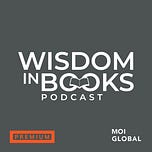This episode is part of our “Wisdom in Books” series and podcast. We seek to inspire your reading with an exclusive author interview or John’s takeaways from an influential book on investing, business, or life.
I am delighted to share this new recording with you, as Capital Returns has been hugely influential in shaping my investment philosophy. The book is truly a “must read” for every investor aspiring to long-term greatness.
In Part One of our two-part series, I took you on a journey through capital cycle theory, as masterfully articulated by Edward Chancellor and London-based Marathon Asset Management.
In this Part Two, we apply capital cycle theory to today’s market environment, seeking to identify exceptional opportunities in capital-starved industries. The discussion applies the capital cycle framework to several asset-heavy sectors that have seen dramatic booms and busts — energy, oil services, shipping, metals & mining, and real estate.
Each of these sectors recently experienced the aftermath of a deep downturn. Years of low investment have strained supply, improving economics for the survivors. This creates potential opportunities for value investors — though timing and careful selection remain key. Below, we preview the major themes of Part Two and how capital cycle thinking is being applied to current industries.
Energy (Oil & Gas): Underinvestment Comes Home to Roost
Oil is a textbook capital-cycle commodity. After years of $100+ oil spurred a spending boom, the cycle turned in 2014: prices plunged and companies slashed upstream capital expenditures by about 50%. Investment stayed depressed through the late 2010s, exacerbated by the 2020 crash. By 2022, demand had recovered but supply couldn’t catch up — global oil inventories fell and OPEC’s spare capacity dwindled. The world faced a structural oil shortage, sending prices back above $100. Yet producers remain cautious: even at these prices, 2022 CapEx was still far below 2014 levels. Instead of chasing volume, companies are returning cash to shareholders. This unusual restraint suggests the upswing could persist until new investment eventually floods back. As value investor Bob Robotti notes, with every existing well depleting and few new ones drilled, a production decline was inevitable — and now it’s playing out in higher prices. For investors, energy firms today enjoy strong cash flows and improving returns on capital.
Oilfield Services: A Brutal Cleansing and Rebound
The oilfield services industry (rig contractors, equipment providers) went through a harrowing downcycle alongside energy. Overcapacity was rife in the last boom, and when oil prices collapsed, service companies collapsed too. Between 2014 and 2018 an average of 40+ offshore rigs were scrapped each year, and nearly every major drilling firm went bankrupt. This cleansing of excess capacity means that now, with oil activity picking up, far fewer rigs and crews are available. Day-rates for drilling have jumped, and surviving companies are finally regaining pricing power. Their stocks have begun to recover from extreme lows, yet the cycle may still be young – virtually no one is financing new rigs (it takes years to add capacity), so incumbents have a wide-open window of opportunity. After this near-death bust, oil services appear to be at the start of a major capital-cycle upswing as demand returns to a shrunken industry.
Shipping: Orderbook Signals in Booms and Busts
Dry bulk shipping offers a prime example of the capital cycle. A China-driven commodities boom in the mid-2000s sent freight rates skyrocketing, leading owners to order too many new ships. When demand tailed off in 2008, the market crashed 90%+, kicking off a long bust in which many vessels were scrapped and investors fled. By 2016, new ship orders had dropped to multi-decade lows, paving the way for a recovery. As global trade rebounded in 2021, freight rates surged and leaner shipping firms earned windfall profits. Crucially, shipowners exercised restraint this time – they did not binge on new vessels, so the upcycle has lasted longer instead of being cut short by oversupply.
Container shipping, in contrast, saw a rapid boom-bust. The pandemic supply-chain crunch drove container freight rates up five- to tenfold, yielding record profits for liners (some earned their entire market cap in profit in one year). But flush with cash, the industry over-ordered new mega-ships, swelling the orderbook to ~25% of the fleet. Now those ships are arriving just as demand normalizes, causing spot rates to collapse over 80% from the peak. This whiplash underscores the capital cycle mantra: when future supply surges, price relief is only temporary. Today, segments with little new capacity on the horizon (like bulk carriers or oil tankers) appear more favorable, whereas those with a glut of ships coming (containers) face a tougher road ahead.
Metals & Mining: Caution Pays Off After the Bust
Mining shows how capital cycle discipline can pay dividends. After the 2000s commodity “supercycle” peaked around 2011, the big miners drastically pulled back – they cut exploration and shelved projects, opting to repair balance sheets. A decade of scant investment left the industry with few new mines in the pipeline. Now demand is rising again (the green energy transition, for example, is boosting need for copper, nickel, lithium, etc.), but supply remains constrained. Analysts at Goehring & Rozencwajg warn of a looming copper shortage – inventories are near record lows and new projects are scarce. In other words, the seeds of a potential upcycle have been planted. Miners are still showing restraint despite higher prices. When iron ore prices doubled to records in 2021, companies did not rush to build new mines, remembering the oversupply lesson. As a result, many mining firms are gushing cash today and trade at low valuations (partly due to ESG concerns and skepticism about demand). The key will be to watch for a resurgence of CapEx: as long as management teams remain cautious, returns on capital in mining could stay elevated. But if they slip back into expansion-at-all-costs mode, that will signal the cycle’s next turn.
Real Estate: Undersupply vs. Oversupply
Real estate cycles often hinge on whether developers overbuilt or underbuilt. In U.S. housing, the 2008 crash was followed by a decade of underbuilding — far fewer homes were built than new households formed. By the 2020s, this left an acute housing shortage. Home prices and rents surged until 2022, and builders enjoyed record profits. Even after interest rates jumped, prices dipped only modestly because inventory remained so tight. The capital cycle logic is clear: the bust (2008) sowed the seeds for the next boom by curtailing supply for years. In contrast, China’s housing market massively overbuilt. Decades of construction led to entire “ghost cities” of empty apartments — China has an estimated 65 million empty units. When the bubble finally popped, major developers defaulted and new building came to a halt. China is now enduring a protracted bust as it works through excess supply — a stark reminder that oversupply can take a long time to fix.
Commercial real estate is seeing its own harsh correction. Offices, in particular, face sky-high vacancies after the shift to remote work, especially in older buildings. Property values have plummeted and financing has dried up. Essentially, no one is funding new office construction now. Over time, this lack of new supply (and the conversion of some offices to other uses) will help the survivors. Some contrarian investors like David Einhorn are even buying distressed offices at around 30% of replacement cost, betting that with no new projects being built, any future pickup in demand will sharply boost the value of existing assets. More broadly, rising interest rates have raised the cost of capital and slammed the brakes on development across many real estate segments. At an 8% cap rate, no new apartment projects make financial sense – development has essentially collapsed. This environment ultimately sets the stage for a recovery: markets that were underbuilt (like U.S. housing or logistics warehouses) remain healthy, while those that overbuilt (downtown offices, etc.) are struggling. Real estate once again shows that when capital is abundant and builds too much, lean times follow – but when capital investment dries up, the groundwork is laid for better days ahead.
Conclusion
Part Two demonstrates that the capital cycle framework remains as relevant as ever. Across industries, the same pattern emerges: where capital was scarce and capacity was cut, conditions are now improving; where capital was overabundant, oversupply has led to pain. The key question for any sector is, “Are investors funding new growth, or are they cutting back and fleeing?” The answer often predicts the future.
Part Two concludes with practical advice for applying this framework — for example, monitor supply indicators (orderbooks, CapEx levels, inventory trends), examine management’s capital allocation discipline, and be willing to go against the crowd during extremes. Value investors who heed these signals can better time when to lean into an unloved industry or to step away from an overhyped one.
Podcast Part Two: Key Segments
Introduction & Context – Recap of capital cycle lessons from Part One; recent macro cycles setting the stage
Energy (Oil & Gas Upstream) – From investment glut to supply shortage, and the new discipline of producers
Oilfield Services – How a wipeout in drilling capacity is turning into a rebound for surviving contractors
Shipping – Wild swings in freight markets; why low orderbooks signaled opportunity (and gluts signaled danger)
Metals & Mining – Post-supercycle retrenchment leading to tight supply (e.g. copper) and strong cash generation
Real Estate – Regional contrasts: U.S. undersupply vs. China oversupply; offices adjusting to higher rates
Takeaways & Conclusion – Applying the capital cycle lens in practice (supply metrics, contrarian strategy, etc.)
This Part Two of our two-part series was recorded in March 2025.
Featured Events
Best Ideas Omaha 2025 (May 2) — special thanks to Greenhaven Road Capital, Tsai Capital, Sather Financial (FULLY BOOKED)
The Zurich Project 2025 (Jun. 3-5) (FULLY BOOKED)
Latticework 2025, The Yale Club of New York City (Oct. 7)
Ideaweek 2026, St. Moritz, Switzerland (Jan. 26-29, 2026)











